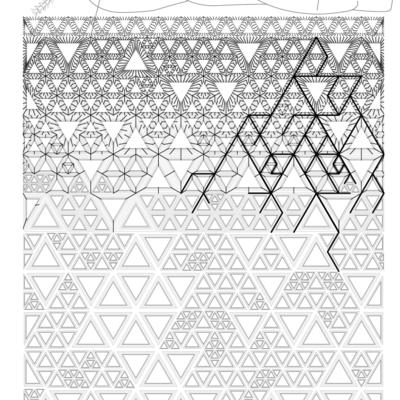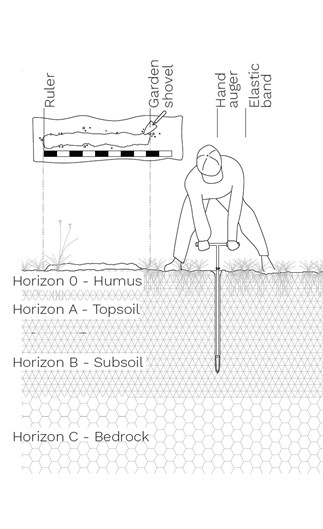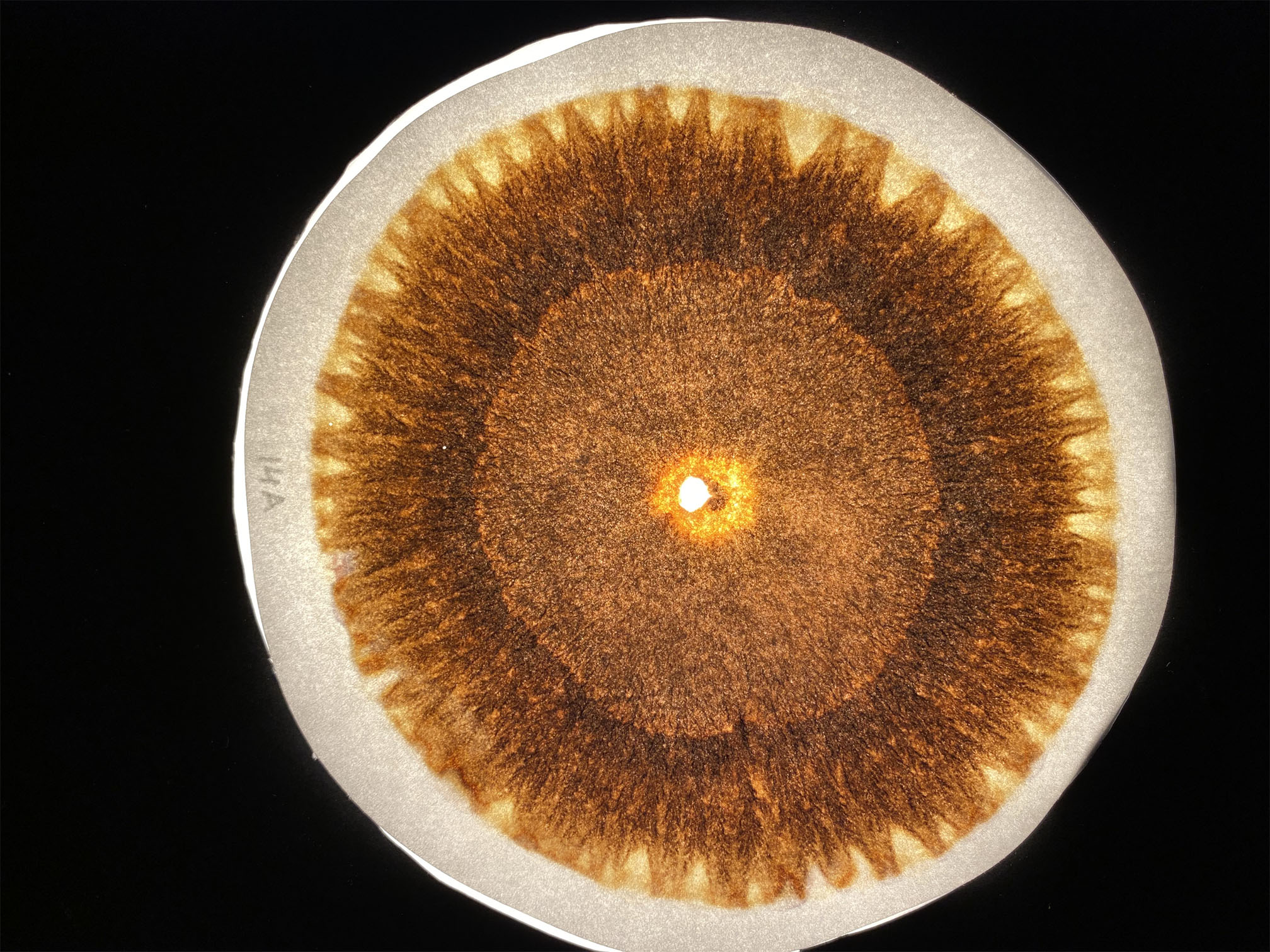
Soil sampling: Pla del Mut Baix
The garden lies on a mid-slope close to a valley bottom, in the lower part of forest that is adjacent to a vineyard. According to our fieldwork results and the studying of geological and soil maps, the type of soil in Jorba can best be characterized as “Emprius” described by the Institut Cartogràfic i Geològic de Catalunya (ICGC). Emprius-type soils are moderately deep, well-drained and of medium texture, with some coarse elements. They have developed on lutites or sandstones from colluvial detrital sediments in gentle and moderate slopes of the Segarra.
The soil profile shows a soil depth of over 1 meter and three distinct soil horizons with an organic layer of around 3 cm on the ground. The organic layer mainly consists of dry and already humified leaves of oaks and needles of pines. The soil profile shows an A-, B-, and C-horizon of 27 cm, 24 cm and > 46 cm. The soil color shows a clear gradient ranging from a dark yellowish brown for the A and B horizon and a brighter brownish yellow the C-horizon. The soil texture reads as sandy clay loam for the A-, loam for the B- and clay for the C-horizon.
As it also applies to all the other gardens, soil texture analyzed in the field does not align well with the data from the soil maps and from the lab analysis. The soil map assumed a much higher content in clay than measured in the field and in the lab.
In addition to the soil profile made by the team, a local soil scientist did a lab analysis. For this, 100 grams of the soil sample was taken from the A-horizon in a depth of 10 cm.
The analytical results indicate that the soil is basic, with very high calcareous levels, not saline and with a low macronutrient content (except for the potassium that is optimal). The organic matter content is very high and presents low or medium levels of micronutrients, except for low magnesium and calcium. As for the physical characteristics of the soil, it has a loam-silt texture.
As a synthesis of the different soil analysis methods, the team developed a drawing of the soil profile using the soil language of the Chair of Being Alive. This drawing combines quantitative data from laboratory analysis and qualitative data from fieldwork. Following this logic, the data for the A-horizon comes from the laboratory analysis and the data for all other horizons comes from the field methods. Since these two approaches are inherently different, this explains possible inconsistencies in the drawing.






